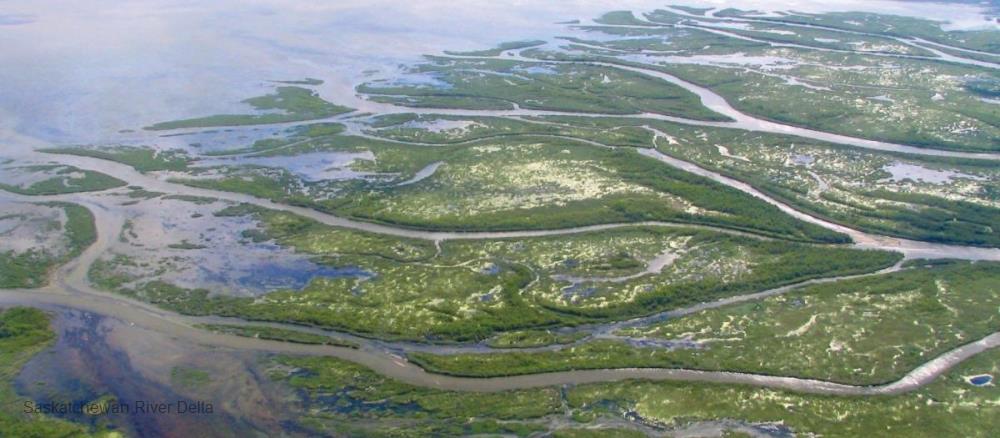
Related items loading ...
Section 1: Publication
Publication Type
Journal Article
Authorship
Huang, X., Rudolph, D.L.
Title
Numerical study of coupled water and vapour flow, heat transfer, and solute transport in variably-saturated deformable soil during freeze-thaw cycles
Year
2023
Publication Outlet
Water Resources Research
DOI
ISBN
ISSN
ISSN 0048-9697
Citation
Huang, X., Rudolph, D.L. (2023) Numerical study of coupled water and vapour flow, heat transfer, and solute transport in variably-saturated deformable soil during freeze-thaw cycles. Water Resources Research.
https://doi.org/10.1029/2022WR032146
Abstract
As climate change intensifies, soil water flow, heat transfer, and solute transport in the active, unfrozen zones within permafrost and seasonally frozen ground exhibit progressively more complex interactions that are difficult to elucidate with measurements alone. For example, frozen conditions impede water flow and solute transport in soil, while heat and mass transfer are significantly affected by high thermal inertia generated from water-ice phase change during the freeze-thaw cycle. To assist in understanding these subsurface processes, the current study presents a coupled two-dimensional model, which examines heat conduction-convection with water-ice phase change, soil water (liquid water and vapor) and groundwater flow, advective-dispersive solute transport with sorption, and soil deformation (frost heave and thaw settlement) in variably saturated soils subjected to freeze-thaw actions. This coupled multiphysics problem is numerically solved using the finite element method. The model's performance is first verified by comparison to a well-documented freezing test on unsaturated soil in a laboratory environment obtained from the literature. Then based on the proposed model, we quantify the impacts of freeze-thaw cycles on the distribution of temperature, water content, displacement history, and solute concentration in three distinct soil types, including sand, silt and clay textures. The influence of fluctuations in the air temperature, groundwater level, hydraulic conductivity, and solute transport parameters was also comparatively studied. The results show that (a) there is a significant bidirectional exchange between groundwater in the saturated zone and soil water in the vadose zone during freeze-thaw periods, and its magnitude increases with the combined influence of higher hydraulic conductivity and higher capillarity; (b) the rapid dewatering ahead of the freezing front causes local volume shrinkage within the non-frozen region when the freezing front propagates downward during the freezing stage and this volume shrinkage reduces the impact of frost heave due to ice formation. This gradually recovers when the thawed water replenishes the water loss zone during the thawing stage; and (c) the profiles of soil moisture, temperature, displacement, and solute concentration during freeze-thaw cycles are sensitive to the changes in amplitude and freeze-thaw period of the sinusoidal varying air temperature near the ground surface, hydraulic conductivity of soil texture, and the initial groundwater levels. Our modeling framework and simulation results highlight the need to account for coupled thermal-hydraulic-mechanical-chemical behaviors to better understand soil water and groundwater dynamics during freeze-thaw cycles and further help explain the observed changes in water cycles and landscape evolution in cold regions
Plain Language Summary
Key Points
-Reproducible, transparent modeling increases confidence in model simulations and requires careful tracking of all model configuration steps
-We show an example of model configuration code applied globally that is traced and shared through a version control system
-Standardizing file formats and sharing of code can increase efficiency and reproducibility of modeling studies
Section 2: Additional Information
Program Affiliations
Project Affiliations
Submitters
Publication Stage
Published
Theme
Water Quality and Aquatic Ecosystems
Presentation Format
10-minute oral presentation
Additional Information
Computer Science Core Team, Conference Presentations (non-invited


 GWFNet
GWFNet Master
Master Data
Data Research
Research Map
Map
 Advanced
Advanced Tools
Tools
 . . .
. . .
 Metadata Editor
Metadata Editor
 Record List
Record List
 Alias List Editor
Alias List Editor
 Legacy sites
Legacy sites